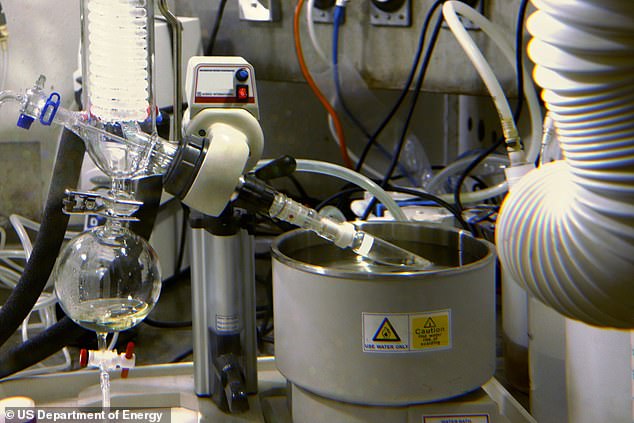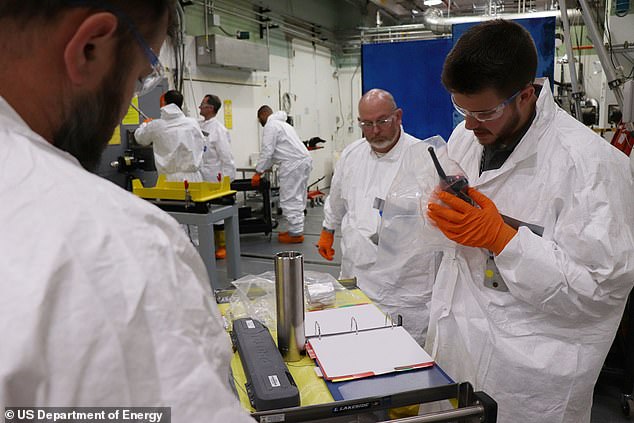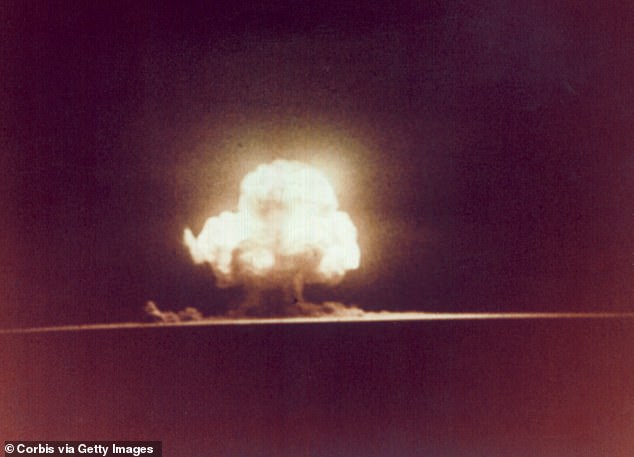Radioactive waste from the earliest days of the US nuclear weapons program is being repurposed into a promising new cancer therapy.
For years, researchers at Oak Ridge National Laboratory (ORNL) in Tennessee have carefully managed leftover materials like Uranium-233.
This highly radioactive isotope has been stockpiled since the 1940s, when it was used in the Manhattan Project to build the first atomic bombs.
During the disposal process, scientists discovered they could extract an extremely rare byproduct of aging uranium, called Thorium-229.
That radioactive substance can be used in targeted alpha therapy, a cutting-edge procedure that attacks cancer cells at the DNA level.
As Thorium-229 breaks down, it produces Actinium-225 (Ac-225), an isotope that can destroy tumors without harming surrounding healthy tissue.
Researchers believe targeted alpha therapy could treat a range of cancers, including lymphoma, prostate cancer, and breast cancer.
Sarah Schaefer, project manager for Oak Ridge’s uranium cleanup effort, said: ‘This is no longer something that will happen in the future. The time is now.’

Scientists disposing of nuclear waste have been extracting Thorium-229 from the dangerous Uranium-233 for use in a breakthrough cancer therapy

Targeted alpha therapy gives doctors a radioactive weapon to use against cancer cells without damaging the patient’s healthy cells (Stock Image)
Targeted alpha therapy is a precise cancer-fighting tool that works like a tiny, guided missile aimed at cancer cells in the patient’s body.
Doctors use Thorium-229 to create Ac-225, which is attached to specialized antibodies that act like homing devices, seeking out and sticking themselves to cancer cells in the prostate, breast, or lymph nodes.
Ac-225 then shoots out radioactive particles (called alpha particles) that break down the cancer cell’s DNA and kill the tumor.
This type of targeted treatment doesn’t affect the healthy cells around the disease, which means there are fewer side effects than broader cancer treatments like chemotherapy.
The biggest problem at the moment is that there is only a tiny supply of Thorium-229 in the entire world – only 45 grams, or 1.6 ounces extracted.
‘It’s important to extract Th-229 because that isotope only comes from U-233,’ Schaefer said in a statement.
‘Most of the world’s supply of U-233 is stored at ORNL, so once this material is dispositioned, no more Th-229 will be available,’ she added.
While scientists have only been able to extract less than two ounces of Thorium-229 from America’s nuclear waste, that’s still enough to treat hundreds of cancer patients each year.

Scientists at Oak Ridge National Laboratory (pictured) have been carefully disposing of Uranium-233 created for nuclear experiments for decades
A single therapeutic dose of Ac-225 typically ranges from four to 50 MBq (megabecquerels), depending on the cancer type and treatment protocol for the patient.
Megabecquerels are units of radioactivity that equate to four to 50 ‘zaps’ of energy, where each zap is enough to target the cancer cells in one session.
That amount of Ac-225 comes from an even smaller amount of Thorium-229, amounting to less than a grain of salt.
So, even though only a microscopic amount of thorium can be extracted from the nation’s nuclear waste, it still goes a long way in medical experiments.
The next problem scientists face, however, is what to do once the Oak Ridge uranium disposal project runs out of waste to clean up.
According to a release from the US Department of Energy, Oak Ridge has set a target date of 2028 for eliminating their entire Uranium-233 inventory.
That means scientists at the facility will need to create a new method for manufacturing Thorium-229 without atomic bomb-making material.

Some of the Uranium-233 stockpiled at Oak Ridge has been around since the first atomic tests used in the famous Manhattan Project (pictured)
Those steps may involve creating Thorium-229 from alternatives like Radium-226 in nuclear reactors.
Scientists would bombard Radium-226 with particles called neutrons to change its atomic structure into thorium.
It’s like cooking with a recipe that takes multiple steps, instead of waiting for Thorium-229 to decay naturally from uranium.
Scientists can also fire protons like subatomic bullets at Radium-226 or Thorium-232 using a particle accelerator called a cyclotron to produce Thorium-229.
It would be like using a high-tech tool to carve out exactly the radioactive material you need.
